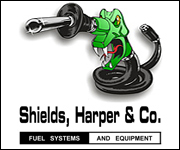|
Many changes have occurred in recent years to help protect businesses from frivolous lawsuits concerning the Americans with Disabilities Act (ADA). Unfortunately they require you to take positive action on the part of the business to take advantage of the benefits to their full extent. CIOMA and the Pacific Oil Conference (POC) have presented several workshops on these updates over the last few years, but the topic certainly deserves even more attention.
There are many advocates in California who seek to assist you in compliance by finding violations at your facilities and threaten to sue your business for the violation. They claim the violation denied a disabled person access to your business and are seeking reparations. They are willing to settle the matter for a typical sum of $5,000 in lieu of a lawsuit. Many businesses are unprepared for the potential of a lawsuit, so they begrudgingly pay off the party to make the problem go away. If you have been a victim, or want to avoid the process, you need to take advantage of the new requirement in the California Code of Regulation, Title 21. Have your facility inspected by a CASP (Certified Access Specialist Program) inspector. Their job as certified inspectors is to help you get into compliance before you have trouble.
I have listed a couple of issues which businesses are routinely targeted for in the hopes that you are able to look at your facility and see just how much effort it will take to pass a CASP inspection. These items are just a few of the many items you can get into trouble for.
Parking spaces (This is a popular one for advocates to come after because they can evaluate your parking spaces from a satellite photo. So what are the big targets for parking?) · Signage – you must have a Caltrans R100B sign located at each entrance to the property, or located at each handicap parking space. Don’t forget to fill in the required information regarding where vehicles can be claimed at and the telephone number with 1-inch high letters (note: the letter itself needs to be 1-inch tall, not the decal). · Number of spaces – make sure you have the correct number of handicap spaces. You must have 1 handicap space for every 25 regular parking spaces. Remember to make sure you have the correct number of van accessible spaces as well. · Slope – the entire space and access aisle must be no more than 2% slope, no exceptions. · Size – The parking space must be 9 feet from center of line to center of line wide, and the aisle must be 5 feet wide for standard handicap spaces and 8 feet wide for van spaces. · Stencils – There needs to be a handicap symbol at the foot of the space with the profile at 36 inches tall. Also the words "no parking" needs to be stenciled at the foot of the aisle with 12 inch high letters AND in a contracting color. The stripes need to be 36 inches in the center and in a contrasting color.
Doors · Doors must have grab handles, rather than knobs. · Required pulling force to open the door cannot exceed 5 lbs. · Must have a level platform in for doors 48 inches by 36 inches not exceeding 2% slope. · The opening, when the door is open to 90 degrees, but be a minimum of 32 inches. · The door must have 12 inches of clearance on the latch side of the door on the push side, more for the pull side. · If equipped with a closer, the door must not close faster than 5 seconds from 90 degrees to 10 degrees.
As you can see, these are just a few of the items, for two areas. There are many more rules for fixture heights, reach distances, protruding objects, card readers, counters, store product, ADA keypads and bathrooms. It is critical to be proactive and get a CASP inspection. Many business owners think that because the City inspected the facility when it was built that they are covered, WRONG. The City does not inspect facilities for ADA compliance, only compliance with City standards. Protect yourself, educate yourself, and cover your bottom line.
For more information regarding specifics on California’s CASP program click here.
Article Provided By: Brian Decker DeWitt Petroleum POC 2014 Speaker: "TEN Ways to Prevent Fuel Theft" |
|
SAVE THE DATE!!! Join us on April 8, 2015 for CIOMA’s Day at the Capitol. Every year CIOMA and its membership makes a very important trip to the State Capitol to meet with our legislative representatives. It is important to know that as members, your grassroots activity dovetails with CIOMA's legislative program and the work done on behalf of CIOMA by our legislative advocate (lobbyist). All of these elements are necessary and are key to making an effective team to promote your perspectives on issues and protect your interests.
Full event details, including registration, special negotiated hotel rates, schedule of the day's events will be published soon. |
|
CIOMA's Upcoming Calendar of Events
|
|
We are proud to announce that CIOMA is co-hosting the NACS Industry Update Luncheon being held at two locations in California (Sacramento, January 21, 2015 and Costa Mesa, January 23, 2015) and is being presented by Hank Armour, NACS President & CEO.
This is an excellent opportunity to network with your peers, enjoy a complimentary lunch and learn about what’s going on in the convenience and retail fuels industry as well as important legislative and regulatory issues facing our industry. Hank will also provide updates on initiatives that the NACS Government Relations Team has been working on such as anti-obesity campaigns, motor fuels liability, swipe fee reform and mobile commerce, just to name a few.
For more information, please contact Carolyn Schnare at cschnare@nacsonline.com.
Information in this article is provided by:
Carolyn Schnare NACS, The Association for Convenience & Fuel Retailing Director, Convenience Store Foundation for Education and Research 1600 Duke Street | Alexandria, VA 22314 | USA Phone (703) 518.4248 |
|
What You Need To Know The 2013 amendment to the 34-Hour Restart Rule ("Restart Rule") has been temporarily suspended until at least September 30, 2015. Because of this suspension, the old Restart Rule is back in effect, and drivers may now use their 34-hour restart without restriction. Background Under federal law, property-carrying vehicle drivers may not drive after 60/70 hours on duty in 7/8 consecutive days. According to the Restart Rule, a driver may start, or restart, a new 7/8 consecutive-day period after taking 34 or more consecutive hours off duty. Because of the recent spending bill passed by Congress, the Federal Motor Carrier Safety Administration (FMCSA) is required to suspend the 2013 version of the Restart Rule. Before 2013, the FMCSA allowed property-carrying vehicle drivers to use the 34-hour restart without restrictions. However, in July of 2013, the Restart Rule was changed to require that drivers incorporate two periods from 1 a.m. to 5 a.m. within their restart periods. Furthermore, the 2013 amendment prohibited drivers from using their 34-hour restart within 168 hours from the time of their last restart. These restrictions are now suspended at least until September 30, 2015, and pending an FMCSA report to Congress outlining the public safety impact on such restrictions. What Does This Change? The Restart Rule in effect before July 1, 2013, is now controlling law once again. Therefore, drivers no longer need to schedule their off-duty hours to include two periods from 1 a.m. to 5 a.m. Drivers may now schedule to take their 34-hour restart within any span of time, so long as the driver spends 34 or more consecutive hours off duty. Additionally, drivers may now take their 34-hour restart within 168 hours (7 days) since their last restart.
With regards to the Restart Rule, California regulations mirror federal law. According to the California Vehicle Code, federal law dictates hours of service regulations for commercial vehicles engaged in interstate and intrastate commerce, absent explicit provisions in California law. Therefore, because the California Vehicle Code does not include any modifications to the Restart Rule, federal law applies. Nevertheless, California drivers should still be mindful and maintain compliance with other California-specific hours of service regulations that may apply. What Can I Do? You may now use your restart at any time so long as you are off-duty for 34 consecutive hours or more. You may also use your restart in a span of less than 168 consecutive hours since your last restart.
If you experience issues with law enforcement agencies regarding this new legislative change, remain calm and appeal the ticket to the government body that monitors commercial vehicle safety in the applicable state.
About the Author: Colin P. Calvert, Attorney at Law is a preferred CIOMA partner.
If you have questions, please contact: Colin P. Calvert Attorney at Law ccalvert@laborlawyers.com| O: (949) 798-2160 2050 Main Street | Suite 1000 | Irvine, CA 92614 |
|
Last November, the Food and Drug Administration (FDA) released its long-awaited regulations implementing menu-labeling requirements at restaurants and "similar retail food establishments." The final rule applies to more entities than originally anticipated, including many convenience stores.
As a general matter, establishments that are covered by the menu-labeling regulations must post calories for standard menu items on menus or menu boards or, for self-service items and foods on display, on signs adjacent to the items. They also will be required to provide additional written nutrition information to consumers upon request.
NACS has prepared a brief summary and compliance guide of the final menu-labeling regulations. Unfortunately, much of the menu-labeling rule's requirements are unclear, as they apply to convenience stores. This is in part because the law is designed primarily for chain restaurants, and applying it to convenience stores creates many complexities that FDA does not adequately appreciate.
In the coming months, NACS hopes to work with the relevant federal officials to obtain guidance and clarification on certain aspects of the menu-labeling rule. NACS will also continue working with key members of Congress to pass legislation limiting the rule's coverage to establishments for which the "primary business activity" is selling restaurant-type food.
Nonetheless, retailers should begin developing an understanding of the rule's requirements and thinking about compliance strategies, as the new rules are set to take effect December 1, 2015. The NACS summary and compliance guide is available here.
News Release provided by: NACS The Association for Convenience & Fuel Retailing |
|
California governor Jerry Brown (D) today proposed spending about $600mn of carbon allowance auction revenue on transportation programs as part of his 2015-16 budget plan.
The funding would represent the majority of the expected $1bn in revenues under the state's greenhouse gas cap-and-trade program.
Most of the transportation funding, $250mn, would go to the state's $68bn high-speed rail project, which held its official ground-breaking ceremony this week. That is in line with an agreement Brown reached with lawmakers last year to earmark one-quarter of future cap-and-trade revenue for the project.
Other major recipients of funding would be the Air Resources Board's low-carbon transportation programs, which would get $200mn and transit and intercity rail under the state Department of Transportation, which would get $100mn.
Brown's proposal also earmarks $200mn in cap-and-trade revenue to sustainable development programs. The remaining $200mn would go to an assortment of energy and natural resource programs, such as energy efficiency upgrades and forestry.
The $1bn would be in addition to $870mn the state has raised from the nine quarterly auctions held to date. Most of the allowances are sold on behalf of utilities, which must use the revenue to benefit their customers, but a portion is sold directly by the state. At the November 2014 auction, the first jointly held by California and Quebec, about 11.5mn of the 33.9mn vintage 2014 and 2017 allowances sold were state-owned. Most of the state allowances, 9.3mn, were for 2017.
According to Brown's proposal, the state is on track to meet its target under AB 32, the state's climate law, to reduce emissions to 1990 levels by 2020. Brown plans to work with the legislature to develop a 2030 target that is "consistent with" achieving an 80pc reduction below 1990 levels by 2050, according to the budget plan.
The state constitution requires approval of a budget by 15 June.
News Release provided by: Argus Media Ltd |
|
The Association election results are in and here is your newly elected slate of Officers and Directors for 2015:
Visit https://www.naylornetwork.com/cio-nwl/articles/index.asp?aid=303513&issueID=39721 to view the full article online. |
|
It’s that time again for CIOMA’s Annual Membership Renewal Process. Be on the lookout for your membership dues renewal packet in the mail within the coming days. We will be sending renewal invoices to all individual members and company primary contacts. Membership dues allow CIOMA to address emerging issues in this rapidly shifting environment and to provide members with critical updates and timely resources on new legislative and policy changes that may impact your business.
Thank you to all CIOMA members for your ongoing commitment and support to the association. We attribute our success to our committed and engaged members who have been, and continue to be, the heart of our association.
For questions, please contact:
Catherina "Trina" Isidro Director, Operations, Member & Program Services California Independent Oil Marketers Association 3835 North Freeway Blvd, Suite 240 Sacramento, CA 95834-1955 Main: (916) 646-5999 | Direct: (916) 830-1398 |
|
WEST SACRAMENTO - The first hydrogen refueling station in Northern California was dedicated in West Sacramento today. It marks the 10th retail hydrogen refueling station in the State and moves California closer to its goal of having 1.5 million zero-emission vehicles (ZEVs) on the road by 2025.
The station is cofunded by the California Energy Commission under its Alternative and Renewable Fuel and Vehicle Technology Program (ARFVTP) and was installed at a fuel station that has been operating for more than 60 years by Ramos Oil, one of the largest Hispanic-owned companies in the United States.
Among the officials who attended the ribbon-cutting were California Energy Commissioner Janea A. Scott; Cliff Caldwell, vice-president of Linde North America Inc., maker of the station's hydrogen storage tanks and compressor; Sen. Richard Pan, D-Sacramento; Mark Johannessen, mayor pro tem of West Sacramento; and Fred Joseck, of the Fuel Cell Technologies Office at the U.S. Department of Energy.
"California is committed to achieving its climate and clean air goals by getting more zero emission vehicles on the road and helping build an infrastructure that supports them," Scott said. "The West Sacramento station, which is one of 51 funded stations and California's 10th operating hydrogen fuel station, gets us closer to our longer goal of constructing 100 stations in convenient locations across the State."
The Energy Commission's ARFVTP has invested more than $500 million to bolster statewide infrastructure and create a viable market for ZEVs, while promoting alternative fuels.
"The prospect of hydrogen's zero emissions technology fits perfectly into our multi-fuel platform concept, and I believe will prove that hydrogen has a place in the transportation fuel mix," said Kent Ramos, owner of Ramos Oil.
Phil Serna, member of the California Air Resources Board and Sacramento County Supervisor, said the station will help attract more alternative-fuel cars to California.
"This brand new facility, which we have eagerly awaited, adds to the growing network of hydrogen stations in the State, helping to strengthen the signal to automakers - keep bringing your advanced, zero-emission fuel cell electric vehicles here to California," Serna said. "The State is strongly committed, with its policies and its funding, to a future where zero-emission vehicles are the norm, not the exception.
Many of the world's largest automakers are introducing fuel cell vehicles into the market, including Honda, Hyundai, Mercedes, Nissan and Toyota, all of which had demonstration vehicles at the ceremony Event participants had the opportunity to test drive the cars.
# # #
About the California Energy Commission: The California Energy Commission is the state's primary energy policy and planning agency. The agency was established by the California Legislature through the Warren-Alquist Act in 1974. It has seven core responsibilities: advancing state energy policy, encouraging energy efficiency, certifying thermal power plants, investing in energy innovation, developing renewable energy, transforming transportation and preparing for energy emergencies.
For more information, visit: www.energy.ca.gov or www.energy.ca.gov/releases/.
Article Provided By: Andrew Hom Air Resources Engineer Fuels and Transportation Division Emerging Fuels & Technology Office 916.651.3000 | Andrew.Hom@energy.ca.gov
|






